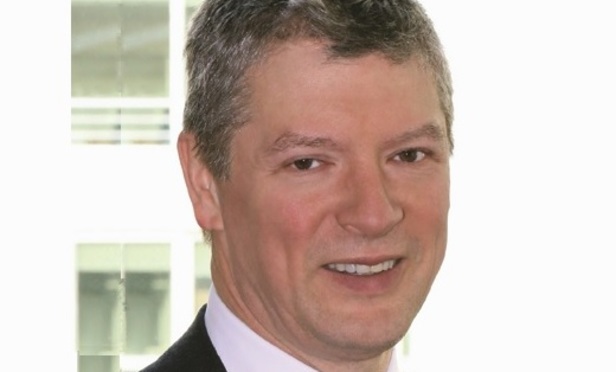'Lawyers have to change what they do' – Top 20 Legal IT Innovators 2016: Bird & Bird's David Kerr
Legal Week Intelligence, in association with Fulcrum GT, recently published the first edition of its Top 20 Legal IT Innovators report, which profiles the law firm leaders, in-house lawyers and tech pioneers driving change in the legal profession.
October 26, 2016 at 07:17 AM
5 minute read
Click here to download the report from Legal Week Law (free registration required).
For 20 years, David Kerr has been CEO of Bird & Bird and before that, acted for some of the largest telecoms operators in the UK and Europe. As an international law firm, Bird & Bird enjoys a strong reputation for helping clients in technology, or which are being transformed by the use of technology. It currently works with 43 of the Fortune Top 100 companies and 60 of the world's 100 most innovative companies, as named by Forbes.
"We are very focused as a firm," says Kerr. "Our entire market focus is on industries that are either based on tech or being fundamentally changed by tech. We almost have to be among the most innovative firms in the way in which we use technology to satisfy that client base, in order to be credible."
One of the big lessons he has learned is that firms cannot just develop technology solutions in isolation from the service that they provide. "Often, law firms fall into the trap of building something very clever and very technical," he says. "But clients don't want to use it." Instead, he likes solutions that "remove the black box of law". By this, he means using technology to give clients more accurate information about the different components of the services. "That's exciting," he says.
Describing a really good technology-based solution in a law firm, one that's really effective, he suggests: "It will have that element of doing what we did before but making it more efficient, better managed, with much clearer components of what's going on. Really good solutions can take a long time to evolve."
Conceived a decade ago, Kerr points to an innovative online client platform, which was his idea. "It enabled us to manage services better, it gave clients much more control, multi-country, enabled them to manage transactions, procurements, major projects and litigation from a secure platform. And we built it. It was extraordinary how it evolved over time. But the core idea remains as true now as it did 10 years ago." More than 60% of the firm's key clients now use it – "A real achievement," he adds.
Kerr believes that law firms need a culture of innovation. "We work quite hard at encouraging people – often not partners but younger people inside the organisation, whether they are lawyers or in business services, to come up with good ideas or good improvements. For example, you are more likely to get innovative ideas on usage of social media from younger generations coming up. You've got to have a culture where that is applauded and rewarded, and it's often the recognition that matters the most. That really matters.
You are more likely to get innovative ideas on usage of social media from younger generations coming up. You've got to have a culture where that is applauded and rewarded.
"Does that make our service better? Yes, it does. That's key: the culture of innovation has got to be really strong. When innovative ideas get rolled out, you capture the imagination of partners. They need to be motivated to talk about it with clients in an excited way, so these clients immediately start being extremely interested."
Innovation has been applied successfully in the firm's new risk management tools and is "very far down the road" in new disclosure and litigation management systems. "We've got very substantial takeup by clients and we're slightly bemused because we keep on seeing independent companies or law firms charging for what we now just offer as part of the deal," says Kerr. "Maybe we're missing a trick but demystifying the use of electronic resources in managing vast volumes of data that you get on investigations or litigation, is part of the service."
This applies across all the offices of the firm in multiple jurisdictions. So how does he manage this simultaneous uniformity? "It's always hard because law firms famously struggle with having a command and control corporate structure, because lawyers get brought up to be independently minded – that's their job in theory. What you've got to do is capture their imagination. It's all about getting them excited by the idea of what we're doing in the firm and it's the same with innovation. Make no mistake though – if you adopt some of these innovations, lawyers have to change what they do."
He remains an optimist about the future role of technology in legal services. "Lawyers who make use of systems to help them do their work better, and who do that well, are going to have a fantastic future. There's no end of opportunities. There is scope for lawyers to build part of what they do. They can become legal architects; architects of how the service is going to be performed and they have a bigger vision of the use of systems, software, databases, AI. You name it."
As a consequence, he suggests: "They are able to harness this and say to the client: we can give you guidance on how you should go about managing your legal requirements and indeed, related requirements. It's not just about legal, it can often be about related knowledge management, related consulting issues, and we are grappling with all three areas."
This content has been archived. It is available through our partners, LexisNexis® and Bloomberg Law.
To view this content, please continue to their sites.
Not a Lexis Subscriber?
Subscribe Now
Not a Bloomberg Law Subscriber?
Subscribe Now
NOT FOR REPRINT
© 2025 ALM Global, LLC, All Rights Reserved. Request academic re-use from www.copyright.com. All other uses, submit a request to [email protected]. For more information visit Asset & Logo Licensing.
You Might Like
View All
How to Build an Arbitration Practice: An Interview with 37-Year HSF Veteran Paula Hodges

Scratching the Entrepreneurial Itch: Linklaters' AI Head On Becoming a Partner and GenAI Hallucinations

'Relationships are Everything': Clifford Chance's Melissa Fogarty Talks Getting on Big Deals and Rising to the Top
7 minute read
The 'Returnity' Crisis: Is the Legal Profession Failing Women Lawyers Returning From Maternity Leave?
8 minute readTrending Stories
Who Got The Work
J. Brugh Lower of Gibbons has entered an appearance for industrial equipment supplier Devco Corporation in a pending trademark infringement lawsuit. The suit, accusing the defendant of selling knock-off Graco products, was filed Dec. 18 in New Jersey District Court by Rivkin Radler on behalf of Graco Inc. and Graco Minnesota. The case, assigned to U.S. District Judge Zahid N. Quraishi, is 3:24-cv-11294, Graco Inc. et al v. Devco Corporation.
Who Got The Work
Rebecca Maller-Stein and Kent A. Yalowitz of Arnold & Porter Kaye Scholer have entered their appearances for Hanaco Venture Capital and its executives, Lior Prosor and David Frankel, in a pending securities lawsuit. The action, filed on Dec. 24 in New York Southern District Court by Zell, Aron & Co. on behalf of Goldeneye Advisors, accuses the defendants of negligently and fraudulently managing the plaintiff's $1 million investment. The case, assigned to U.S. District Judge Vernon S. Broderick, is 1:24-cv-09918, Goldeneye Advisors, LLC v. Hanaco Venture Capital, Ltd. et al.
Who Got The Work
Attorneys from A&O Shearman has stepped in as defense counsel for Toronto-Dominion Bank and other defendants in a pending securities class action. The suit, filed Dec. 11 in New York Southern District Court by Bleichmar Fonti & Auld, accuses the defendants of concealing the bank's 'pervasive' deficiencies in regards to its compliance with the Bank Secrecy Act and the quality of its anti-money laundering controls. The case, assigned to U.S. District Judge Arun Subramanian, is 1:24-cv-09445, Gonzalez v. The Toronto-Dominion Bank et al.
Who Got The Work
Crown Castle International, a Pennsylvania company providing shared communications infrastructure, has turned to Luke D. Wolf of Gordon Rees Scully Mansukhani to fend off a pending breach-of-contract lawsuit. The court action, filed Nov. 25 in Michigan Eastern District Court by Hooper Hathaway PC on behalf of The Town Residences LLC, accuses Crown Castle of failing to transfer approximately $30,000 in utility payments from T-Mobile in breach of a roof-top lease and assignment agreement. The case, assigned to U.S. District Judge Susan K. Declercq, is 2:24-cv-13131, The Town Residences LLC v. T-Mobile US, Inc. et al.
Who Got The Work
Wilfred P. Coronato and Daniel M. Schwartz of McCarter & English have stepped in as defense counsel to Electrolux Home Products Inc. in a pending product liability lawsuit. The court action, filed Nov. 26 in New York Eastern District Court by Poulos Lopiccolo PC and Nagel Rice LLP on behalf of David Stern, alleges that the defendant's refrigerators’ drawers and shelving repeatedly break and fall apart within months after purchase. The case, assigned to U.S. District Judge Joan M. Azrack, is 2:24-cv-08204, Stern v. Electrolux Home Products, Inc.
Featured Firms
Law Offices of Gary Martin Hays & Associates, P.C.
(470) 294-1674
Law Offices of Mark E. Salomone
(857) 444-6468
Smith & Hassler
(713) 739-1250









